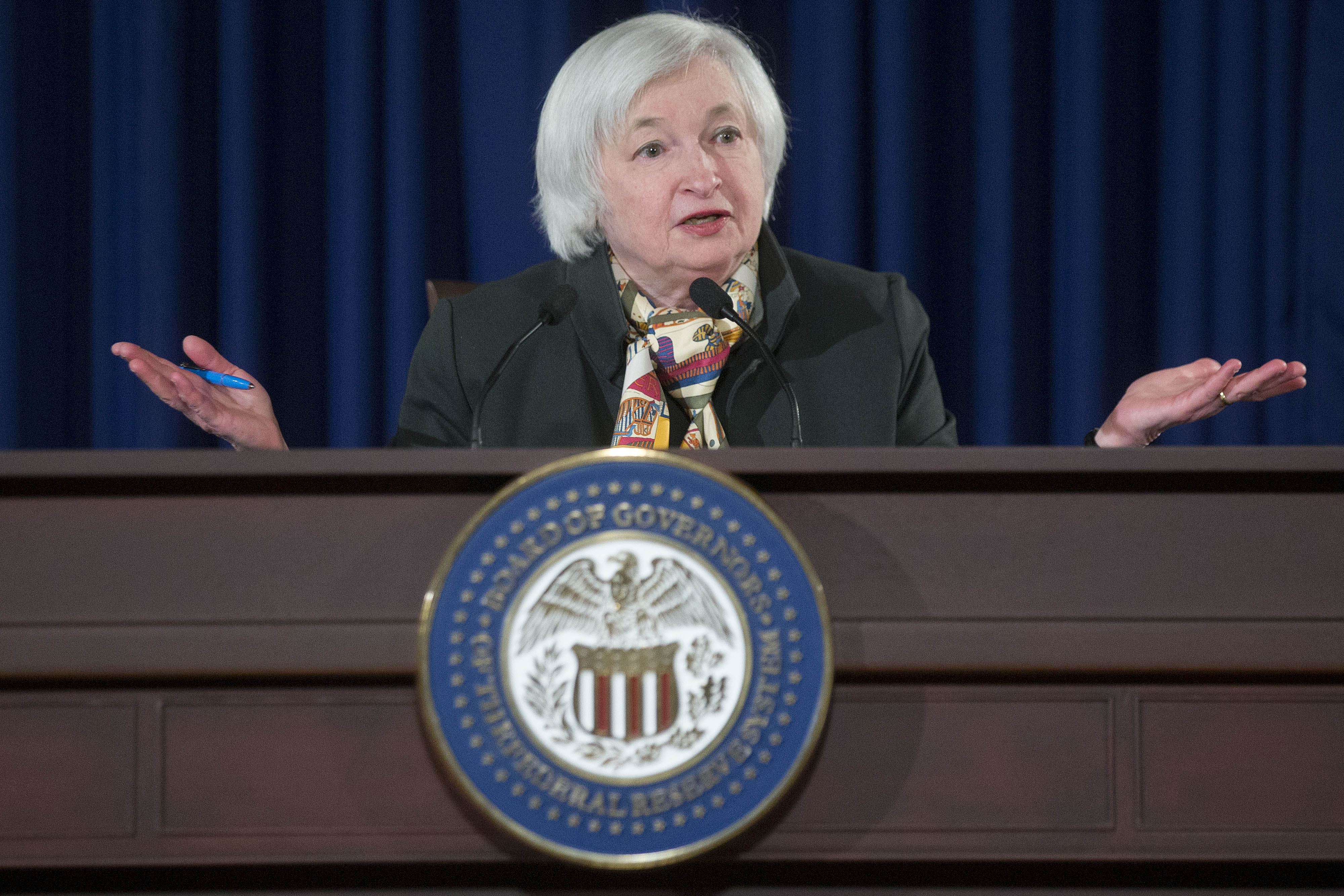There are four general categories into which all spreads fall: vertical spreads, time spreads, straddles and strangles, and synthetics.
Vertical Spreads
A vertical spread is a spread consisting of either two calls or two puts, both on the same underlying asset, sharing the same expiration month, but with a different strike price. For example:
Buy one XYZ January 110–120 call spread at 6.00.
In this spread, a trader would buy one XYZ January 110 call and at the same time sell one XYZ January 120 call and pay a total debit of 6. The credit collected for selling the 120 call helps offset the premium paid for the 110 call.
In the professional-trading nomenclature, vertical spreads are divided into two categories: call spreads and put spreads.
There are, then, four possible mutations that traders can trade:
- Buy a call spread.
- Sell a call spread.
- Buy a put spread.
- Sell a put spread.
Nonprofessional traders use a different vernacular for vertical spread categorization, contrary to the simple buying or selling of call spreads or put spreads. Retail traders commonly divide vertical spreads into either debit and credit spreads or bull and bear spreads.
Debit and credit spreads are sorted as such because of the posting to a trader’s account when the trade is made. When the more expensive option is purchased, in either a call or put spread, and the cheaper option is sold, a debit results (i.e., the trader pays for the spread, hoping it can be sold later at a higher price) in the trader’s account. Hence the name debit spread.
When the higher-priced option is sold, in either a call of put spread, and the less expensive one is purchased, a credit results (i.e., the trader receives cash in his or her account, hoping to later pay less than the credit received to close the trade). Hence the name credit spread.
Alternatively, directional exposure can be used as a segregator in the retail realm. Call or put spreads that profit from the underlying asset rising are called bull call spreads or bull put spreads, respectively. Call or put spreads that profit from the underlying asset falling in price are called bear call spreads or bear put spreads, respectively.
Vertical spreads are one of the most powerful and versatile categories of option spreads.
They can be used to trade directional exposure, time exploitation, Volatility
Volatility
In finance, volatility refers to the amount of change in the rate of a financial instrument, such as commodities, currencies, or stocks, over a given time period. Essentially, volatility describes the nature of an instrument’s fluctuation; a highly volatile security equates to large fluctuations in price, and a low volatile security equates to timid fluctuations in price. Volatility is an important statistical indicator used by financial traders to assist them in developing trading systems. Trad
In finance, volatility refers to the amount of change in the rate of a financial instrument, such as commodities, currencies, or stocks, over a given time period. Essentially, volatility describes the nature of an instrument’s fluctuation; a highly volatile security equates to large fluctuations in price, and a low volatile security equates to timid fluctuations in price. Volatility is an important statistical indicator used by financial traders to assist them in developing trading systems. Trad
Read this Term revaluation, and more. They can be very conservative or very leveraged plays. While elegant in their simple construction, they are fairly intricate spreads that require a thorough understanding to trade effectively.
Ratio vertical spreads, which include backspreads, are an extension of vertical spreads. As opposed to the accustomed one-to-one proportion of the component options of vertical spreads, ratio vertical spreads, as the name implies, have a ratio of options bought to options sold other than one-to-one. These are sometimes called one by- twos, one-by-threes, or whatever the option ratio dictates. For example, a trader may trade the XYZ November 20–22.50 call spread one-by-two, by buying one November 20 call and selling two November 22.50 calls.
Ratio spreads can be created in any proportion. Generally, a greater number of the lower-priced options are traded in order to create a lower-risk trade. It is commonplace to refer to trading ratio spreads that result in debits as buying the spread, and those that result in a credit as selling the spread.
Time Spreads
A time spread is a spread consisting of either two calls or two puts, both on the same underlying asset, sharing the same strike price, but with a different expiration month.
For example:
Buy one XYZ March–April 50 call spread at 2.30.
In this spread, the trader would buy one April 50 call and sell one March 50 call for a net debit of 2.30.
Time spreads are also called calendar spreads or, archaically, horizontal spreads. In giving an order to trade a time spread, it is customary for traders to say they are buying the spread if they are buying the month with more time until expiration—which would be the more expensive option resulting in a debit for the transaction.
Traders say they are selling the spread if they are selling the longer-dated option, again being more expensive and therefore resulting, in this case, in a credit.
A trader placing an order in a professional-trading environment would simply say something like 'buy one May–June 70 put.' In a nonprofessional trading environment, one would say, 'buy one May–June 70 put time [or calendar] spread.'
Time spreads are useful strategies that are traded by both professional and retail traders. Professional traders tend to trade time spreads as a volatility differential trade, buying the low volatility month and selling the high. Retail people are more fixated on always buying the spread, sometimes disregarding the volatility levels, with the objective of benefiting from the time-decay disparity of options with different expiration dates.
Other common option spreads that fit into the time spread family are double calendars, diagonals, and double diagonals:
- Double calendars consist of two time spreads entered at the same time, creating a four-legged option strategy—long (or short) the two longer-dated options and short (or long) the two shorter-dated options. Double calendars consist of two common strike prices. Double calendars are sometimes also called strangle Swaps
Swaps
Swaps can be defined as a derivate contact composed of two parties that exchange to cash flow between two separate financial instruments.They are generally divided into two categories. This includes contingent claims (options) and forward claims, where forward contracts, swaps, and exchange-traded funds (ETFs) are exchanged. Commodity price, equity price, interest rate, and foreign exchange rate are common variables used as one of the cash flows in swaps upon initiation. Different Types of Swaps
Swaps can be defined as a derivate contact composed of two parties that exchange to cash flow between two separate financial instruments.They are generally divided into two categories. This includes contingent claims (options) and forward claims, where forward contracts, swaps, and exchange-traded funds (ETFs) are exchanged. Commodity price, equity price, interest rate, and foreign exchange rate are common variables used as one of the cash flows in swaps upon initiation. Different Types of Swaps
Read this Term when one spread (the lower-strike spread) is a put calendar and the other (the higher-strike spread) is a call calendar.
- Diagonals are made up of two options that both have different expiration months and different strikes. Diagonals are so called as they are a combination of a vertical and a horizontal spread. In retail trading it is most common to buy the lower-strike, longer-dated call option and sell a higher strike, shorter-dated call. The construction of diagonal spreads is more assorted in professional-trading circuits.
- Double diagonals consist of two diagonal spreads held at the same time. It is most common—especially in retail trading— for there to be two months involved in the spread and four separate strike prices. This spread may involve a combination of calls and puts.
Straddles and Strangles
A straddle consists of a long put and a long call (or a short put and a short call) sharing the same strike and the same expiration month.
A strangle consists of a long put and a long call (or a short put and a short call) each with different strikes. Typically the put in a strangle has a lower strike (and is usually out-of-the-money at the onset of the trade) than the call (which is usually also out-of-the money when the trade is established).
Spreads are assumed to reduce risk, however one could argue that neither straddles nor strangles reduce risk. In terms of incremental risk, theta, gamma, and vega all increase to around double that of either individual leg of the spread. Delta generally gets offset, but the volatility risk is doubled. For that reason, there are some traders, albeit a minority, who don’t consider straddles or strangles to be spreads.
Straddles and strangles are volatility plays. The straddle, in particular, is the purest way to buy or sell volatility. This is evidenced in the fact that both gamma and vega are maximized by buying or selling both spread legs and that profits or losses can increase with great magnitude if there is a volatile move in either direction.
Synthetics
Put-call parity is a formula that expresses the relationship of calls to puts. But much more can be derived from this concise equation. It also suggests option relationships, called synthetics. The following is the formula for put-call parity:
Call = Put + Stock – Strike + Interest – Dividend
To rephrase in a non-mathematical vernacular, this equation states that once interest and dividends are factored in, a call equals a put of the same strike plus stock.
Mathematically,
Call = Put + Stock
Specifically,
Long Call = Long Put + Long Stock
A long put combined with long stock is a basic spread. Changing the signs in the equation yields important algebraic restatements of this relationship with which to create other spreads. Some synthetic spreads contain stock, some only options. Synthetics help traders in arbitrage trading as well as in understanding positions in simpler terms.
Read here part 1.
Read here part 3.
There are four general categories into which all spreads fall: vertical spreads, time spreads, straddles and strangles, and synthetics.
Vertical Spreads
A vertical spread is a spread consisting of either two calls or two puts, both on the same underlying asset, sharing the same expiration month, but with a different strike price. For example:
Buy one XYZ January 110–120 call spread at 6.00.
In this spread, a trader would buy one XYZ January 110 call and at the same time sell one XYZ January 120 call and pay a total debit of 6. The credit collected for selling the 120 call helps offset the premium paid for the 110 call.
In the professional-trading nomenclature, vertical spreads are divided into two categories: call spreads and put spreads.
There are, then, four possible mutations that traders can trade:
- Buy a call spread.
- Sell a call spread.
- Buy a put spread.
- Sell a put spread.
Nonprofessional traders use a different vernacular for vertical spread categorization, contrary to the simple buying or selling of call spreads or put spreads. Retail traders commonly divide vertical spreads into either debit and credit spreads or bull and bear spreads.
Debit and credit spreads are sorted as such because of the posting to a trader’s account when the trade is made. When the more expensive option is purchased, in either a call or put spread, and the cheaper option is sold, a debit results (i.e., the trader pays for the spread, hoping it can be sold later at a higher price) in the trader’s account. Hence the name debit spread.
When the higher-priced option is sold, in either a call of put spread, and the less expensive one is purchased, a credit results (i.e., the trader receives cash in his or her account, hoping to later pay less than the credit received to close the trade). Hence the name credit spread.
Alternatively, directional exposure can be used as a segregator in the retail realm. Call or put spreads that profit from the underlying asset rising are called bull call spreads or bull put spreads, respectively. Call or put spreads that profit from the underlying asset falling in price are called bear call spreads or bear put spreads, respectively.
Vertical spreads are one of the most powerful and versatile categories of option spreads.
They can be used to trade directional exposure, time exploitation, Volatility
Volatility
In finance, volatility refers to the amount of change in the rate of a financial instrument, such as commodities, currencies, or stocks, over a given time period. Essentially, volatility describes the nature of an instrument’s fluctuation; a highly volatile security equates to large fluctuations in price, and a low volatile security equates to timid fluctuations in price. Volatility is an important statistical indicator used by financial traders to assist them in developing trading systems. Trad
In finance, volatility refers to the amount of change in the rate of a financial instrument, such as commodities, currencies, or stocks, over a given time period. Essentially, volatility describes the nature of an instrument’s fluctuation; a highly volatile security equates to large fluctuations in price, and a low volatile security equates to timid fluctuations in price. Volatility is an important statistical indicator used by financial traders to assist them in developing trading systems. Trad
Read this Term revaluation, and more. They can be very conservative or very leveraged plays. While elegant in their simple construction, they are fairly intricate spreads that require a thorough understanding to trade effectively.
Ratio vertical spreads, which include backspreads, are an extension of vertical spreads. As opposed to the accustomed one-to-one proportion of the component options of vertical spreads, ratio vertical spreads, as the name implies, have a ratio of options bought to options sold other than one-to-one. These are sometimes called one by- twos, one-by-threes, or whatever the option ratio dictates. For example, a trader may trade the XYZ November 20–22.50 call spread one-by-two, by buying one November 20 call and selling two November 22.50 calls.
Ratio spreads can be created in any proportion. Generally, a greater number of the lower-priced options are traded in order to create a lower-risk trade. It is commonplace to refer to trading ratio spreads that result in debits as buying the spread, and those that result in a credit as selling the spread.
Time Spreads
A time spread is a spread consisting of either two calls or two puts, both on the same underlying asset, sharing the same strike price, but with a different expiration month.
For example:
Buy one XYZ March–April 50 call spread at 2.30.
In this spread, the trader would buy one April 50 call and sell one March 50 call for a net debit of 2.30.
Time spreads are also called calendar spreads or, archaically, horizontal spreads. In giving an order to trade a time spread, it is customary for traders to say they are buying the spread if they are buying the month with more time until expiration—which would be the more expensive option resulting in a debit for the transaction.
Traders say they are selling the spread if they are selling the longer-dated option, again being more expensive and therefore resulting, in this case, in a credit.
A trader placing an order in a professional-trading environment would simply say something like 'buy one May–June 70 put.' In a nonprofessional trading environment, one would say, 'buy one May–June 70 put time [or calendar] spread.'
Time spreads are useful strategies that are traded by both professional and retail traders. Professional traders tend to trade time spreads as a volatility differential trade, buying the low volatility month and selling the high. Retail people are more fixated on always buying the spread, sometimes disregarding the volatility levels, with the objective of benefiting from the time-decay disparity of options with different expiration dates.
Other common option spreads that fit into the time spread family are double calendars, diagonals, and double diagonals:
- Double calendars consist of two time spreads entered at the same time, creating a four-legged option strategy—long (or short) the two longer-dated options and short (or long) the two shorter-dated options. Double calendars consist of two common strike prices. Double calendars are sometimes also called strangle Swaps
Swaps
Swaps can be defined as a derivate contact composed of two parties that exchange to cash flow between two separate financial instruments.They are generally divided into two categories. This includes contingent claims (options) and forward claims, where forward contracts, swaps, and exchange-traded funds (ETFs) are exchanged. Commodity price, equity price, interest rate, and foreign exchange rate are common variables used as one of the cash flows in swaps upon initiation. Different Types of Swaps
Swaps can be defined as a derivate contact composed of two parties that exchange to cash flow between two separate financial instruments.They are generally divided into two categories. This includes contingent claims (options) and forward claims, where forward contracts, swaps, and exchange-traded funds (ETFs) are exchanged. Commodity price, equity price, interest rate, and foreign exchange rate are common variables used as one of the cash flows in swaps upon initiation. Different Types of Swaps
Read this Term when one spread (the lower-strike spread) is a put calendar and the other (the higher-strike spread) is a call calendar.
- Diagonals are made up of two options that both have different expiration months and different strikes. Diagonals are so called as they are a combination of a vertical and a horizontal spread. In retail trading it is most common to buy the lower-strike, longer-dated call option and sell a higher strike, shorter-dated call. The construction of diagonal spreads is more assorted in professional-trading circuits.
- Double diagonals consist of two diagonal spreads held at the same time. It is most common—especially in retail trading— for there to be two months involved in the spread and four separate strike prices. This spread may involve a combination of calls and puts.
Straddles and Strangles
A straddle consists of a long put and a long call (or a short put and a short call) sharing the same strike and the same expiration month.
A strangle consists of a long put and a long call (or a short put and a short call) each with different strikes. Typically the put in a strangle has a lower strike (and is usually out-of-the-money at the onset of the trade) than the call (which is usually also out-of-the money when the trade is established).
Spreads are assumed to reduce risk, however one could argue that neither straddles nor strangles reduce risk. In terms of incremental risk, theta, gamma, and vega all increase to around double that of either individual leg of the spread. Delta generally gets offset, but the volatility risk is doubled. For that reason, there are some traders, albeit a minority, who don’t consider straddles or strangles to be spreads.
Straddles and strangles are volatility plays. The straddle, in particular, is the purest way to buy or sell volatility. This is evidenced in the fact that both gamma and vega are maximized by buying or selling both spread legs and that profits or losses can increase with great magnitude if there is a volatile move in either direction.
Synthetics
Put-call parity is a formula that expresses the relationship of calls to puts. But much more can be derived from this concise equation. It also suggests option relationships, called synthetics. The following is the formula for put-call parity:
Call = Put + Stock – Strike + Interest – Dividend
To rephrase in a non-mathematical vernacular, this equation states that once interest and dividends are factored in, a call equals a put of the same strike plus stock.
Mathematically,
Call = Put + Stock
Specifically,
Long Call = Long Put + Long Stock
A long put combined with long stock is a basic spread. Changing the signs in the equation yields important algebraic restatements of this relationship with which to create other spreads. Some synthetic spreads contain stock, some only options. Synthetics help traders in arbitrage trading as well as in understanding positions in simpler terms.
Read here part 1.
Read here part 3.



















